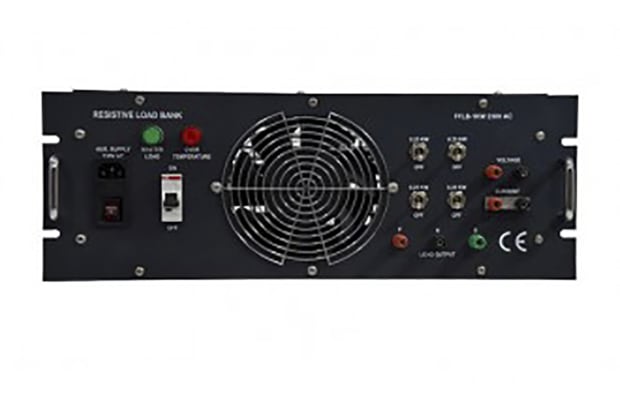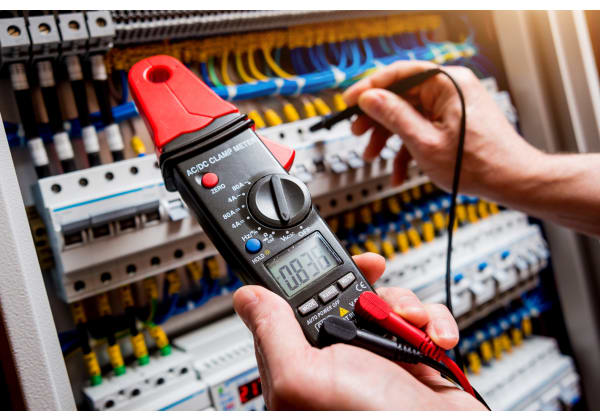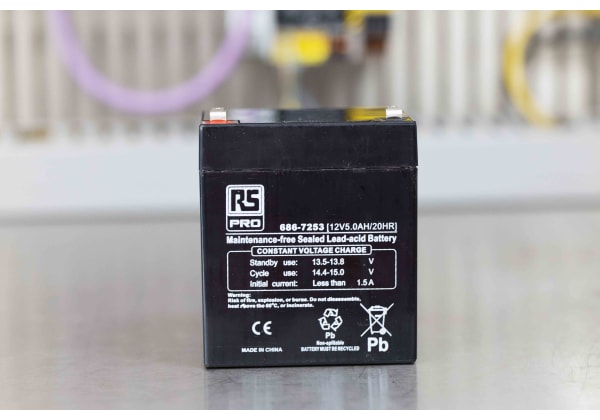- Published 12 Jun 2023
- Last Modified 29 Aug 2023
- 5 min
What is Load Bank Testing?
Learn everything there is to know about load bank testing.

Reviewed by Karl Ralph, Technical Support Engineer (November 2022)
Load banks are devices that simulate and apply electrical load to the sources of power they’re connected to, such as generators, batteries, or an uninterruptible power supply (UPS). By recreating the demand that the power source will come under during its regular operations, load banks help to test their efficiency and performance without connecting them to main power systems.
Available in portable and fixed models, load banks are essential pieces of testing equipment in a range of electrical applications, such as in data centres, manufacturing businesses and the oil and gas industry. Using a load bank to test a power source ensures that essential systems don’t experience a drop in performance during emergencies or unexpected problems with supply.
This guide will explain exactly how load banks work, how they can be used to test power sources and how to find the right option for your needs.
Why Do Load Bank Testing?

Load bank testing can be carried out on a range of power sources and is recommended to be completed regularly to:
- Check they will perform as expected: whether they’ve just been installed or will only be used under emergency or extreme circumstances, load bank testing helps you to ensure you won’t be let down by your power source. Unlike exercise periods, load banks allow you to test the power source under a load that’s equivalent to the conditions it will have to operate in. This will avoid any unexpected shutdowns, which is particularly important in the case of backup power sources
- Identify weaknesses in the system: a power source may have been ticking over for many years without any problems. However, there may be some problems that standard tests or maintenance programmes won’t pick up on. Load bank testing enables teams to identify any potential issues and fix them before they cause any downtime
- Avoid wet stacking diesel engines: if a power source uses a diesel engine, then there is a danger that wet stacking, where unburned fuel remains inside the system, will occur and cause damage and reduce efficiency. Performing load bank testing for some hours every couple of years will ensure that the power source is being put under the correct load, using all its fuel and avoiding wet stacking
In short, load bank testing helps to ensure that power sources will perform efficiently and safely in long-term or emergency circumstances.
Ways of Doing Load Bank Testing

Depending on the specific power source and system you’re running, you will need a different type of load bank to perform your testing. Load banks are categorised in two ways - how mobile they are and the type of testing they can perform. Fixed, portable, trailer-mounted, roof-mounted, and duct-mounted load banks are all available to help you regularly test your power sources wherever they are based.
There are also options based on the type of testing you want to run, including:
- Resistive: the most common type of load bank, these test the power source at 100% capacity and use resistors to convert any excess electrical energy into heat
- Reactive: these load banks test power sources up to 75% capacity and convert electricity into a magnetic field
- Combined resistive-reactive: by combining the two different types of load bank technology, they can test a wider range of variables
- Inductive: by using wire coils, these load banks cause the load current to peak after voltage to measure lagging power factors
- Capacitive: the capacitors in these load banks store electrical charge and enable the current to peak before voltage. This enables users to get a leading power factor measurement
By choosing the right type of load bank for your needs, you can ensure that you get the measurements you require and ensure your power source is put through its paces.
Load Bank Testing Procedure
The specific load bank testing equipment and procedure you need to run will change depending on the set-up and type of measurements you require. However, there are some general guidelines you can follow for each type of power source you’re testing, such as a generator, battery, or UPS.
What is a Load Bank for Generator Testing?
Each generator will have manufacturer’s instructions, however, most load bank tests can be conducted using the following steps:
- Connecting the load bank to the generator with the right-sized cables
- Setting the generator’s output breaker to ‘off’ and ensuring the load bank’s emergency stop button isn’t pressed
- Match the load bank’s voltage to the generator’s output, or whatever power output is appropriate for the type of test you’re running
- Turn the control power and load switches on until you reach the right load capacity
- Run the test for your set time before shutting off each of the load switches and, finally, the main power
Battery Bank Load Testing
When you’re load testing a battery, you must follow the manufacturer’s guidelines alongside the following advice:
- Use a DC load bank to run tests on individual batteries
- Make sure you have baseline information (e.g., capacity) that you can measure the test results against
- Be aware of the industry standards that set out battery performance, maintenance, and testing guidelines
UPS Load Bank Testing
Alongside the UPS load bank testing procedure set out in the manufacturer’s guidelines, it’s important to take the following advice into account:
- Use an AC load bank to test the whole UPS
- Run regular visual checks of the individual components, enclosures, and surrounding conditions to ensure any maintenance or efficiency issues are dealt with in advance of problems
- Installing advanced UPS monitoring systems can help technician teams have an overview of its status and alert them of any issues
By selecting the right type of load bank, following the manufacturer’s instructions, and performing these tests regularly, you’ll be able to get an overview of your power source’s efficiency and ensure it will perform well and safely when required.


